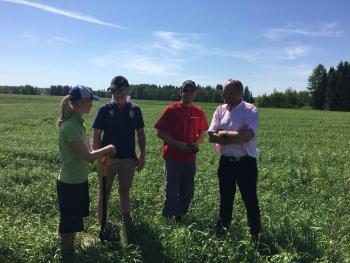Sustainable intensification in upland grazing production systems
Finnish farmers optimise the short five month growing period by using Timothy and tall fescue grasses. This project aims to investigate whether incorporating these hardier and deeper rooting grasses into a seed mix can increase productivity on upland farms. Improving the financial return and viability of upland leys by increasing the carrying capacity and output is vital to ensure their long term profitability.
This project will involve sowing various trial plots in two hill blocks of wet, peaty ground that run up to just over 425 metres above sea level. Plots will be sowed with an ‘off the shelf ley’ with an increasing percentage of Timothy in each plot. The aim is to see how much Timothy should be incorporated into the seed mix to allow good establishment, performance, and persistence. Two minimum tillage sowing methods will also be investigated to see which technique gives a higher establishment success. To establish the plot trials, the existing sward will be sprayed off, half the plots will be scratch seeded and the other half slot seeded.
During the project the following data will be collected:
- Sample grass cuts will be taken from protective cages every 4-6 weeks through the growing season to assess the quality and volume of forage
- Species composition will be assessed by physical separation and visual assessment
- Wet chemistry will be used to assess the metabolizable energy (ME) and crude protein (CP) levels within the different mixes
- Ewes and lambs will rotationally graze the plots and their performance will be monitored by the farmers
- Information will be collected on how often ewes should be moved in a rotational system as there is little information regarding rotationally grazing Timothy
- The performance of the leys during Winter grazing will be monitored as one of the main benefits of Timothy is its potential to extend the growing season

